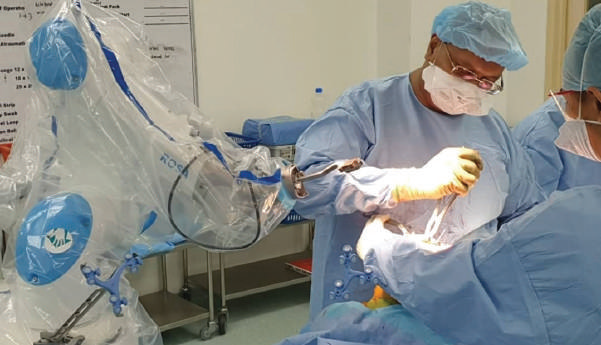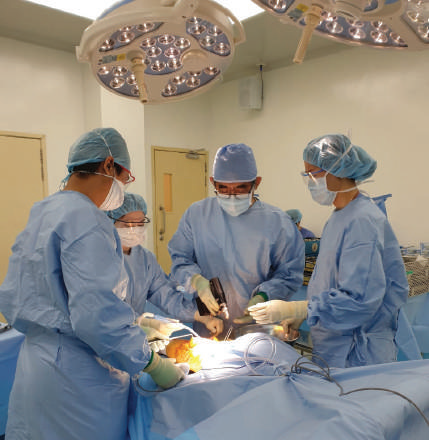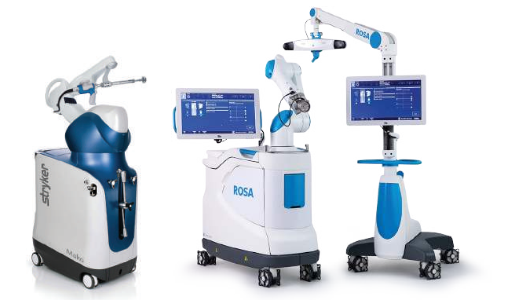Future of Orthopaedic Surgery: The Power of Robotic-Assisted Techniques
05 January 2022
Movement may be the simplest thing in the world. We hardly give a thought to taking a few steps to the kitchen. But mobility is an entirely different thing. What if those few steps are accompanied by pain, causing you to limp all the way?
Mobility is the ability to move freely and easily, and is important as our bodies are designed to move. Mobility has profound effects on our social, psychological and physical condition, and has a major role in emotions, learning and relationships.
In this issue, our orthopaedic experts talk about the field that’s closest to them, how it has evolved and meeting their robot assistants, Mako SmartRobotics and ROSA Knee System.

Dr Suhail Suresh

Robotic surgery has taken joint replacement surgery to an advanced level.
How is orthopaedic surgery traditionally done and how has it evolved
What are the risks of surgery and how are these risks reduced through robotic surgery?
How has robotics improved the way surgery is performed?
Surgical risk can be reduced through training and experience, and robotic surgery has helped enhance a surgeon’s skills. Robotic surgery has enabled surgeons to perform surgeries more accurately which contributes to durability of the replaced joint and patients experiencing a more natural knee.
How does a doctor and machine complement each other in the field of medicine?
Orthopaedic surgeons use a lot of tools and machines. Good tools help make the operation easier, however we need a good surgeon to utilise the tool properly. We don’t want a surgeon who sees everything as a nail when he is given a hammer in his hand.
What can we look forward to in the future of orthopaedic surgery?
I hope we can one day inject medications into the joint for cartilage to grow. This will in turn avoid surgery on patients.


Surgeons are able to perform surgeries more accurately with robotic surgery.

"To me, mobility is the ability for an individual to move freely and easily. It is tremendously important for a person to carry out his or her life independently. I always knew I wanted to become a surgeon as I like to deal with problems head-on. In orthopaedics, there are multiple implants involved fulfilling the “young boy” in me with his toys."

This surgery was the first robot-assisted total hip replacement to be performed in Malaysia with Mako SmartRobotics.

Tell us about Mako SmartRobotics and ROSA Knee System.
Both machines allow surgeons to plan surgeries with preoperative data from CT scans and x-rays, helping surgeons to ‘see’ more and cut less. During surgery, a live feed of kinematic information of the patient’s joint is fed throughout the procedure which makes the surgery much safer. It also helps in balancing the joints to a near perfect alignment.
Both machines also assist surgeons in making more accurate cuts and implant placements, reducing the risk of cutting vital structures, allowing the patient to recover more comfortably, enjoy a natural joint feeling and have longevity of the implant.
Mako SmartRobotics can perform three types of surgeries – partial knee replacement, total knee replacement and total hip replacement. Meanwhile, ROSA Knee System can perform total knee replacement.
Share with us a patient experience undergoing robotic-assisted surgery.
Hip pain due to osteoarthritis has been troubling 80-year-old Madam Lim for years and her condition has progressively worsened until a point where she could hardly walk 10 metres before needing to rest again.
She came all the way from Teluk Intan, Perak to consult with me and after discussions with her family members, she decided to embark on a total hip replacement with Mako SmartRobotics. The surgery was successfully performed on 5 July and she was discharged 3 days later and has since recovered. During her last consultation at the end of September, she can walk freely by then.
What can we look forward to in the future of orthopaedic surgery?
I wish to have more robot-assisted surgeries in the area of orthopaedics besides just arthroplasty.



